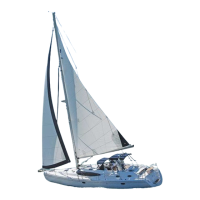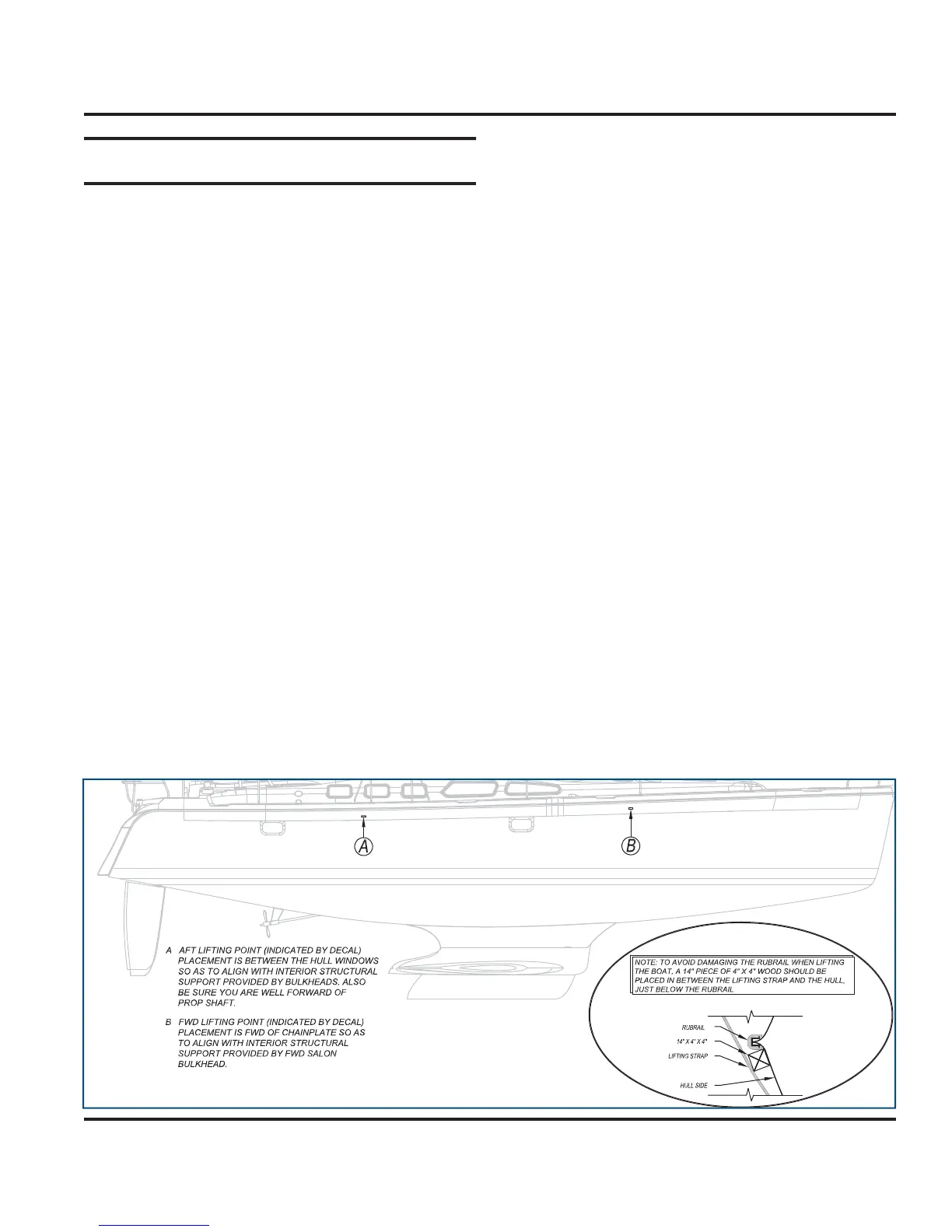nt
r
• M
int
n
n
14.
is su
lied b
the boat manufacturer.
14.6 Stora
e and Liftin
In most cases, the reason
or stora
e is winter la
up.
The information in this section is a
eneral
uide. Your
oat
ea
er or a competent
oat
ar
s
ou
prepare
our
boat
or winter stora
e. I
ou are removin
our boat
from the water for another reason, use the information in
t
s sect
on as a
u
e
ne.
o
ow
n
t
e proce
ures
n
this section helps to extend the li
e o
our boat and its
quipment and simplifies re-commencin
in the sprin
.
Indoor stora
e is bene
icial i
ou are storin
our boat in
a climate that produces ice and snow. However, the stor-
a
e
u
n
s
ou
e a
equate
vent
ate
, not t
t
losed. Ventilation, both around and throu
hout the boat,
is ver
important.
I
ou use outdoor stora
e
acilities, cover
our boat with
a canvas cover with provisions
or ventilation to keep the
boat from “sweatin
.” Buildin
a frame over the boat to
support the canvas will allow the passa
e o
air around
th
t. Th
r
m
h
l
w in
h
wi
r th
n
t
t
t
nv
w
r t
r
.
Be
ore preparin
our boat
or winter stora
e, check the
ondition of the boat and its s
stems and equipment.
Note an
repairs needed. The need
or other repairs ma
become apparent durin
winterization. Make arran
e-
ments to
ave t
e re
a
rs com
ete
.
4.6.1 Liftin
Your Boa
Followin
are
uidelines which will help prevent dama
e
to
our boat as it is bein
lifted.
Never hoist the boat with a
reater than normal accu-
mulation of water in the bil
e. Fuel and water tanks
should be empt
.
* Place slin
s where indicated b
the slin
ta
s on the
unwale. Proper location o
the a
t slin
is critical. Li
tin
a
t o
the station indicated ma
dama
e the propeller
shaft. Liftin
forward of the station indicated, with the
slin
under the exhaust outlets, ma
cause crackin
which is not covered b
the warrant
. Blocks or pads at
t
e c
ne corners w
e
ee
ressure to a m
n
mum
at this point
* Disconnect the
ro
eller shafts at the transmissions to
prevent dama
e to the transmission.
* Use flat, wide slin
s made of beltin
and spreader bars
lon
enou
h to keep pressure o
the
unwale. Do not
use cable slin
s. Pressure b
the slin
s on the
unwale
an cause severe
e
coat craz
n
or more ser
ous
u
dama
e.
* The spreader bar at each slin
should be as lon
as the
distance across the widest point the slin
surrounds
* Wei
ht should be primaril
distributed alon
the keel.
I
a marine railwa
or plat
orm is used, locate and ad
ust
the blockin
to distribute the wei
ht over several areas at
the intersection of strin
ers and bulkheads. The bunks
Li
tin
Points Illustratio

